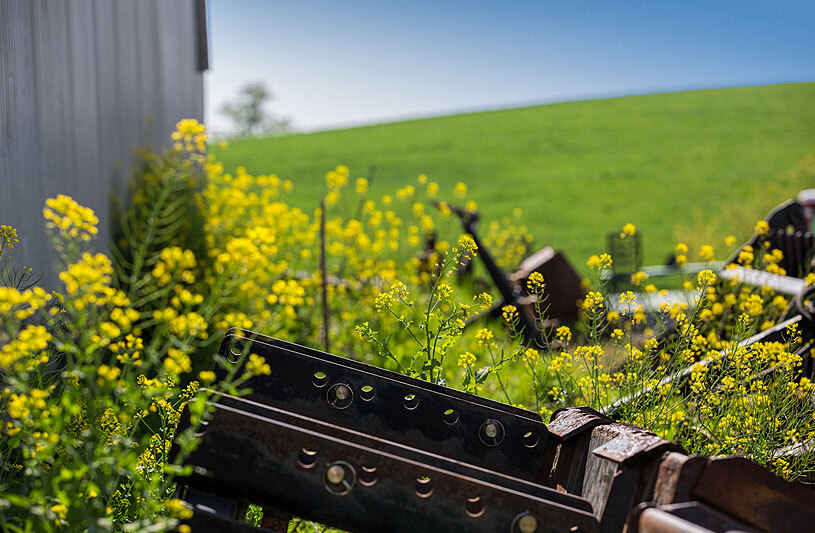Restoration & Conservation
Resilience Benefits
Howard County aims to ensure that the resiliency benefits provided by ecosystems are valued and protected. Wetlands, forests, and streams act as natural sponges and filters in the landscape. They absorb water and the energy that carries it during storms. They sequester carbon and remove or breakdown various pollutants from the air, ground, and water. These ecosystems provide countless additional services which need to be better understood and supported as we prepare for increased community stressors associated with climate change.
Restoration & Conservation
Wetlands Protection
The County is working to increase protections for wetlands, especially in vulnerable watersheds and near underserved populations. In addition, the County is investigating options for wetland preservation, restoration, and creation. Since many wetlands are on private land, it can be challenging to implement regulations and protection policies. Fortunately, stormwater management and farm management practices lend themselves to opportunities to address the concerns of multiple stakeholders through wetland stewardship.
Restoration & Conservation
Forest & Tree Canopy Protection
Howard County is focused on using a variety of tools to protect and enhance the forest and tree canopy resources, as well as to further research our forest needs. For example, the County may look at different types of forests and tree canopy and evaluate how they might merit different levels of protection in preparation for climate change. Periodic updates of the Forest Conservation Act and Forest Conservation Manual, and funding for the upkeep of Forest Conservation Easements and other County owned, forested lands are all essential to successful forest protection in Howard County.
Restoration & Conservation
Leading by Example: Partnership Between Howard County and MD Department of Natural Resources
In October of 2024, Howard County Executive Calvin Ball signed a Memorandum of Understanding (MOU) with the Maryland Department of Natural Resources to plant 46,800 trees on roughly 107 acres of state land in Howard County. The planting completed in March of 2025, and was the largest voluntary planting - of any kind - ever in Howard County. These trees will support the health of both the Patuxent and Patapsco watersheds, which contribute to quality of life and sustain the Chesapeake Bay. Read more about the partnership here and learn about the planting here.
Restoration & Conservation
Community Engagement: The Tree Savers Program
To combat the growing threat of invasive plant species on County-owned parkland, Howard County launched a volunteer Tree Savers program in late 2024. Volunteers receive training in invasive vine removal via online tutorials. Howard County Natural Resources staff guide volunteers in group vine removal sessions, and self-guided and self-paced volunteer opportunities are also available for residents who are interested in working on their own schedule. Online training and events schedules are posed on the Howard County Forestry website (select “Tree Savers” under the dropdown for “Forestry Programs and Giveaways”).
Restoration & Conservation
Stream Protection
When streams are connected to the ecosystems around them and their edges are forested, they can better absorb water and extreme weather impacts. This protects human development from bearing the brunt of extreme weather, demonstrating how healthy streams provide benefits to developed areas.
Healthy streams also provide clean drinking water, habitat for a multitude of species, recreational opportunities, aesthetic value and other ecosystem services. These streams are often recognizable by their low banks which allow water to enter the floodplain during storms, an important process for stream resiliency and sustainability.
Green Infrastructure Network (GIN)
Importance of Connectivity
Connectivity between ecosystems is critical for their health and function, especially in the wake of a natural disaster or with shifting climate patterns. After a major disturbance such as fire, flood, or an insect invasion, ecosystems which are connected to healthy ecosystems will recover more quickly than areas without those connections.
Similarly, if shifting weather patterns degrade an ecosystem in one location, such as the long-term drying of a wetland, the Green Infrastructure Network (GIN) provides potential routes for species to emigrate to other locations. The plant and animal species in the GIN rely on its connectivity for their long-term vitality, and human populations rely on the ecosystem services provided by these species and their associated ecosystems.
What You Can Do
Promote Overall Wildlife and Plant Benefits
Taking steps around your home or neighborhood can benefit the ecosystems around you. Learn about environmental planning and other county efforts to preserve and enhance our ecosystems.

